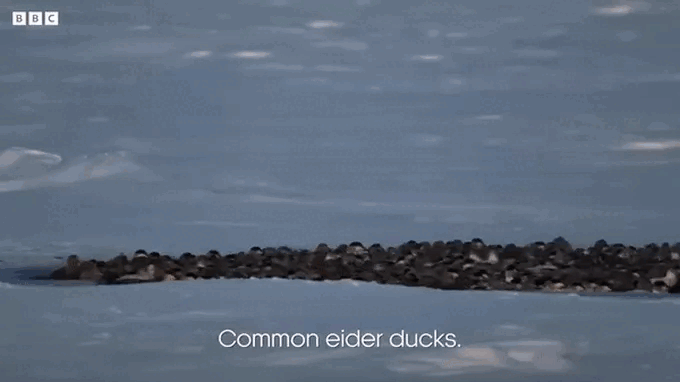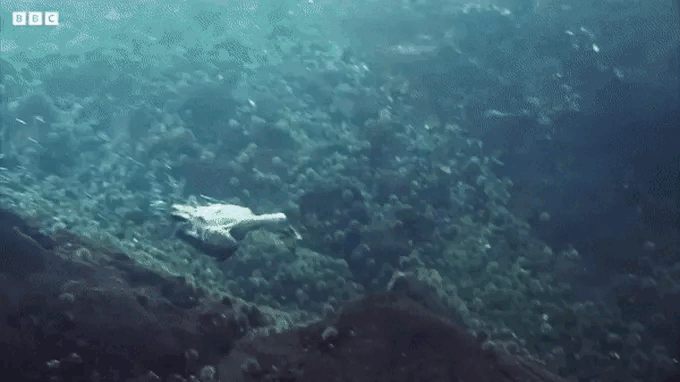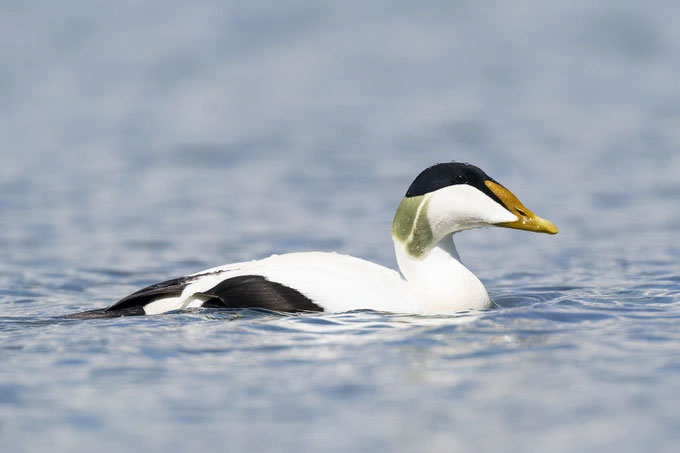The “oases” provide a rich food supply for common eiders but also serve as a “death trap” for inexperienced young birds.
Throughout the winter, the Arctic Ocean freezes, separating the waters. However, there are still “oases” in the ice, known as polynyas. Their area might not be larger than a football field, but they attract thousands of “guests” who choose to stop there. These are the common eiders (Somateria mollissima).
Food Oases Become “Death Traps” in the Frigid Winter
This seabird species is considered one of the toughest in the world. They have evolved effective survival skills, developing their own insulating feather layer. Experts claim this is the warmest plumage in the animal kingdom, allowing them to endure bone-chilling cold.

Common eiders gather at the oasis to forage. (Image taken from video).
The reason why the eider flock “relies” on this oasis is quite simple. With just over a minute of holding their breath, they can dive 20 meters deep and feast on clams and sea urchins below. The food source beneath the oasis is abundant, allowing them to “fill their bellies.”
A common eider can consume food equal to its body weight in a single day. Although this “food hotspot” is very attractive, it is actually an unsafe foraging area.
The ocean currents help keep the oasis open. When they sense danger, the older, more experienced birds will fly away in search of safer waters. Meanwhile, the younger ones, experiencing their first harsh winter, tend to stay behind, lured by the plentiful food source.

Ocean currents and ice above exhaust the bird, preventing it from reaching the shore. (Image taken from video).
Some continue to forage under the ice. When they try to turn back, they soon become exhausted and cannot break through the ice to reach the shore. The inexperienced young ones fall victim to the “death trap” of the oasis. Hence, it is said that only the strong, smart, and wise survive in the frozen regions of the Earth.
Common eiders are large sea ducks measuring between 50 to 71 cm in length, found along the northern coasts of Europe, North America, and eastern Siberia. They breed in the Arctic and some other northern temperate areas, but they escape the winter cold by migrating south to temperate regions. They can fly at speeds of up to 113 km/h.

Common eiders are sea ducks found along the coasts of Europe, North America, and eastern Siberia. (Image: Ebird).
Common eiders build their nests near the sea, using feathers plucked from the breast of the female. This type of feather is also collected by humans to make blankets and pillows due to its durability and warmth.


















































